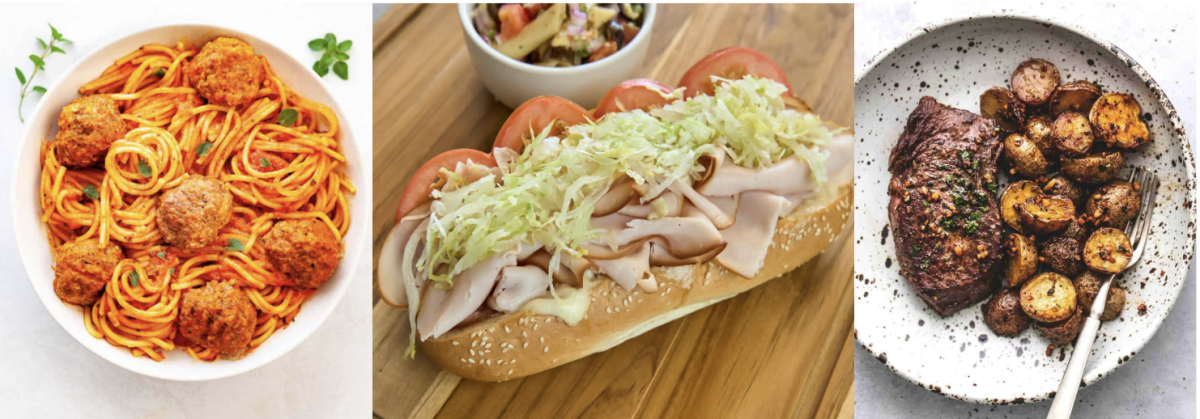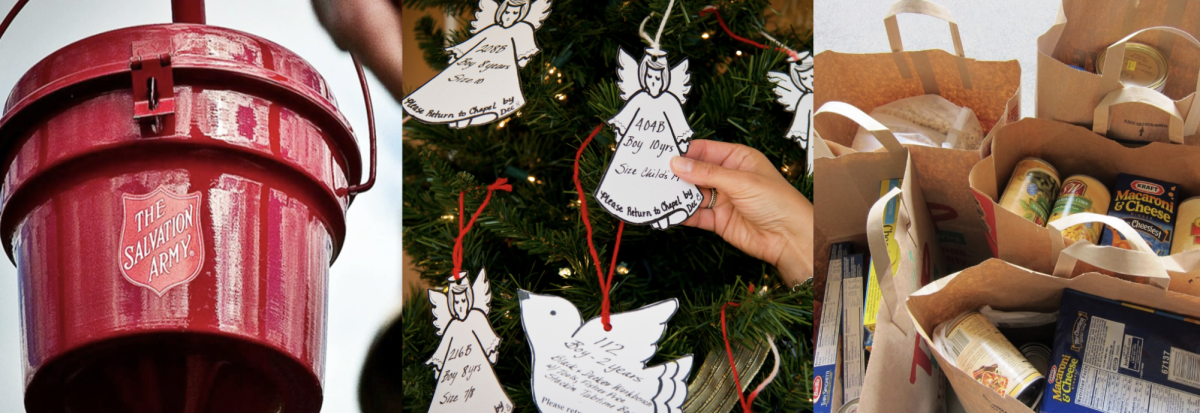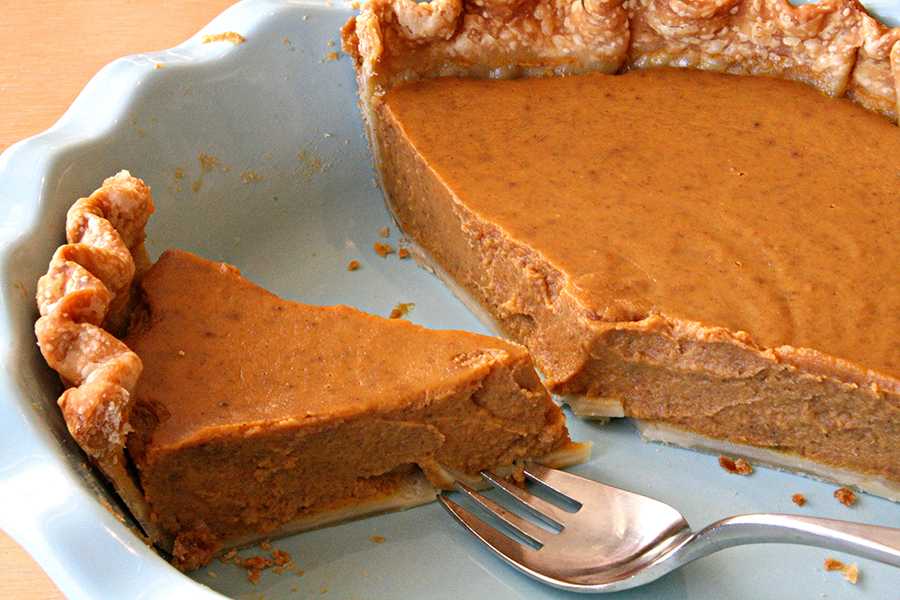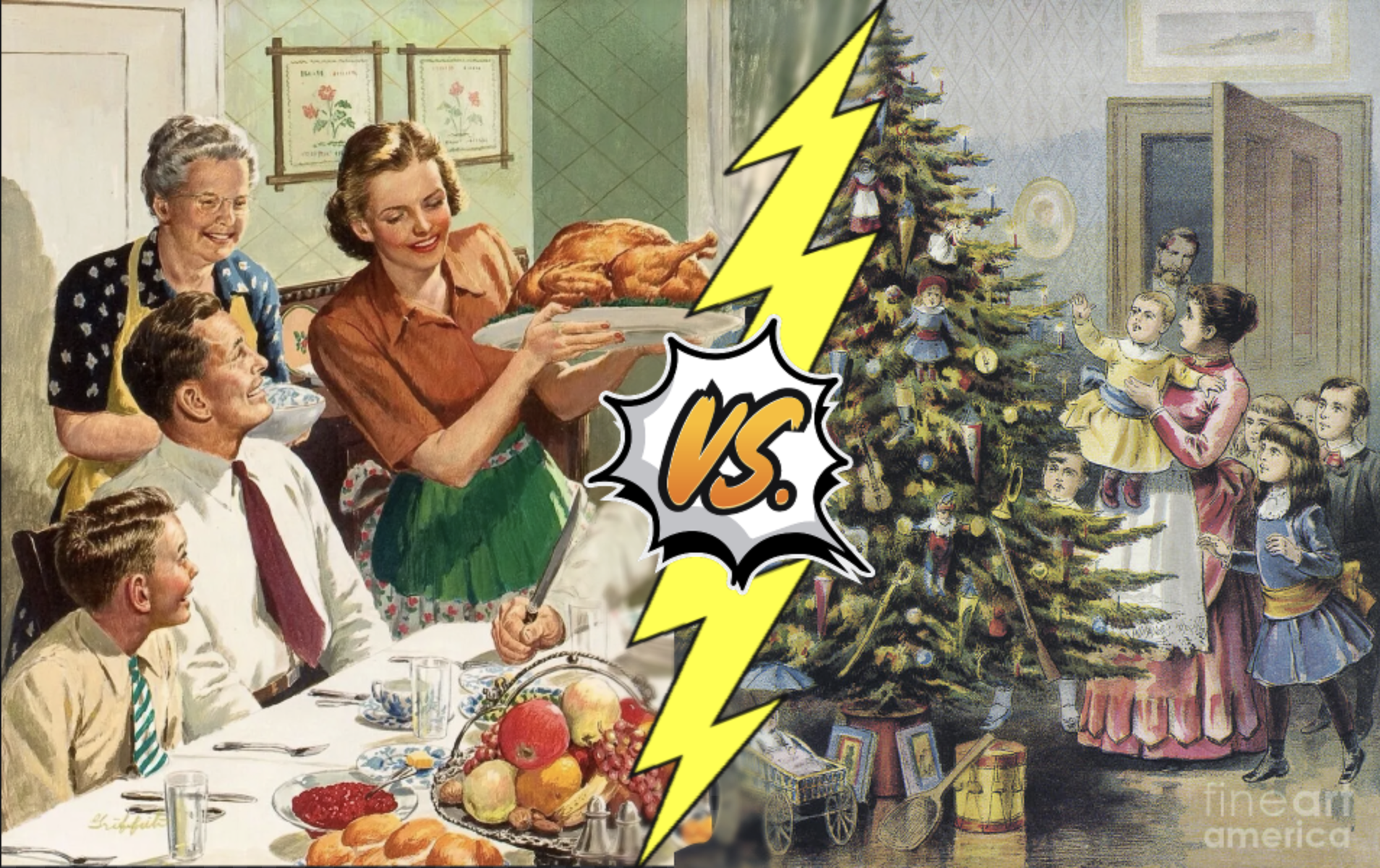From fat feast to healthy helpings
For some, Thanksgiving is a diet – ruining, lazy provoking holiday. For others, it’s an excuse to eat as much food as the human stomach can possibly contain. Either way, most of these heavily – packed caloric meals result in falling asleep on a couch with a food coma -as crazy relatives scream at the football players on the TV screen. Fortunately, there are plenty of options to satisfy any and all types of appetites. KE compiled a list of various ways to turn these traditional, fattening dishes into tasty and healthy meals.
Thanksgiving classic, pumpkin pie, contains a highly caloric content but remains a holiday tradition.
November 25, 2014
Pumpkin Bread:
The baking process for making pumpkin bread involves a lot of care and attention. Similar to most baked items, the ingredients play a huge role in mouthwatering taste. The essential aspect to the taste, of course, is canned unsweetened pumpkin. Pumpkin is a nutrient-rich vegetable that is used for many different baked goods. Using canned pumpkin completely takes away most of the nutrients provided by the natural vegetable. Despite the high level of calories, the taste would be substantially different without that extra tablespoon of cinnamon, nutmeg, sugar, and loads of butter.
How to make this healthy:While the pumpkin is the most crucial item in this holiday favorite, other ingredients can be substituted with healthy alternatives. For example, instead of adding heaps of greasy butter, use applesauce. It may sound a bit distasteful, but this baby-associated food provides a similar taste to butter or margarine supplemented with nutrients. Disguising vegetables in baked goods is conceivably difficult, yet zucchini blends well into dessert breads, especially into pumpkin bread. By adding zucchini, you add vitamins and thus feel a little less guilt in indulging yourself in this fall classic.
Pumpkin Pie:
Imagine this: On a Monday morning, the sounds coming from your stomach are terrifyingly loud. You grab the cream cheese, toast a bagel, and slab a couple globs of cream cheese on your toasted bagel. Now take those “couple” globs to a new level—a whole package, that’s what goes into this pie. Let’s be honest, no one who digs into a scrumptious-looking pie is worrying about the calorie count. In fact, one whole pie adds up to 2,414 calories, with one slice being 323 calories. That’s the equivalent to a light meal. Nevertheless, pumpkin pie is easy to make, effortless to serve, a consistent crowd pleaser, and a guaranteed upset stomach.
How to make it healthy: There are couple ways to turn this calorie-stuffed food into a healthier dessert. When making a homemade pie, you can replace flour with nut flour or wheat flour. You also have the option to substitute whole milk or cream cheese for soy or almond milk to cut calories and pack on the nutrients. The most efficient way, however, is to simply to cut your serving in half.
Gravy:
There are a number of different ways to make gravy, though there aren’t a whole lot of healthy options. Generally, gravy consists of fattening butter and some type of meat broth or grease. Although this combination may sound unappealing, gravy is a necessity for any Thanksgiving meal. It goes well on top of mashed potatoes, over turkey, baked biscuits, or on poured over any plain food that needs a kick. Gravy is full of calories and commonly paired with starchy foods. There happens to be 123 calories in one cup of Betty Crocker gravy; that’s extensively high considering it is just a topping for the already unhealthy mashed potatoes.
How to make this healthy: Gravy normally contains lots of grease, and there are alternatives that doesn’t let the classic taste suffer and still keep it health-friendly. By replacing the leftover turkey broth or grease with low-sodium chicken, broth consumers are saving their precious arteries as well as their precious time. To extract that juicy flavor, try soaking the gravy in herbs such as thyme or sage.
Green Bean Casserole:
While green beans happen to be the casserole’s key ingredient, the name is deceiving because the product itself is, in fact, unhealthy. However, it shows up on nearly every family Thanksgiving table. Consisting of cream of mushroom soup and fried onions, the amount of calories in this holiday favorite extremely high, and they don’t appear out of nowhere. The cream content takes up the majority of the calorie count. This crunchy, creamy mixture, however, is unavoidable to most food fanatics.
How to make this healthy: Green beans are definitely considered healthy, but when added to a casserole, the benefits are overpowered by the thick cream. Try sacrificing the classic casserole for a fresh green bean veggie dish instead. If you are not ready to give up old ways, use most of the same ingredients but remove extra calories by creating a different sauce. Instead of using mushroom cream, swap it out for some olive oil and almond milk with a bit of nuts to create thickness.
Stuffing:
It’s self explanatory. The main ingredients may be illusional––it contains meat, vegetables, and egg, all of which are generally healthy, diet-safe items. However, this delicious side is extremely unhealthy because of the starchy ingredients. Most stuffing recipes contain a large amount of white bread crumbs, providing many extra calories and having no nutritional value. To make all this bread stick like glue to the other ingredients, high amount of butter is required.
How to make this healthy: Use turkey sausage or chicken instead of the thick kind for a leaner meat. Another way to relieve cholesterol levels is to substitute Egg-Beaters with regular eggs. These provide the exact same amount of protein but with zero fat and very few calories.
By just making a few changes to these original recipes, thanksgiving dinner can satisfy the stomach and avoid frequent trips to the bathroom. Although the food can often be the center of attention on Thanksgiving, don’t forget to your family, talking to your grandma, and, of course, don’t overdo yourself on the feasting. Happy Turkey Day Folks.


















































